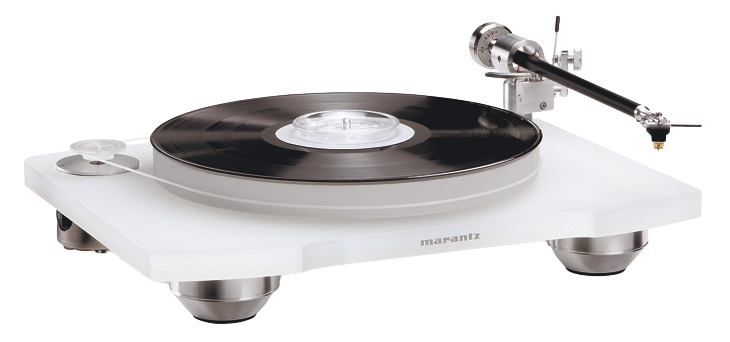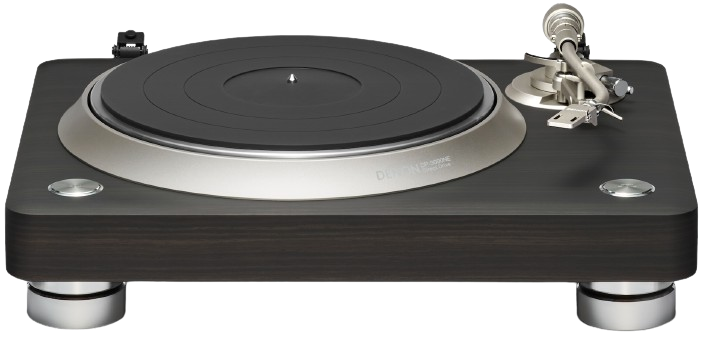Direct-Drive vs. Belt-Drive Turntables: Which is Right for You?

Throughout our 50+ year history, ListenUp has shared a deep love of vinyl with our customers. Warm, engaging analog sound, a physical album to engage with while listening, and even the act of shopping for records, have kept this format relevant and as popular as ever. To celebrate, ListenUp is deeming February ‘Analog Month,’ sharing all things analog, vinyl and turntables on our social channels, as well as hosting a series of Analog events at our showrooms—read more about that here.
And, we’ll be putting out useful blogs like this one to hit on some of the basics. In this installment, we’ll do a quick rundown of belt-drive and direct-drive turntables, highlighting the pros and cons of each, so you can start, or continue, your analog journey a little more informed.

Marantz TT-15S1 Belt-Drive
Belt-Drive Turntables
Likely the most traditional type of table, Belt-driven turntables use an elastic belt to rotate the platter. There are several advantages to this style of turntable.
Lower Noise - The motor is located away from the platter and is connected by the belt to rotate the platter, producing the music you hear. By locating the spinning motor and its associated noise further from the tip of the stylus it will affect music playback the least.
Less Vibration - The belts, which are typically rubber, absorb any vibrations from the motor, which results in less noise and interference. However, the belt also means that the turntable may not rotate as quickly as a direct drive-turntable in comparison. This can result in some speed fluctuations, which can affect the pitch of the music.
Upgradeability - In many cases with a belt driven turntable you can upgrade many of the components. While most turntables allow you to change cartridges, a belt drive turntable allows you to upgrade other components such as the power source and platter.
Belt drive tables are typically available in the widest range of prices starting as low as $150 and going up to the stratosphere at $50k or more. Belt drive tables run quiet but require some maintenance as you will need to replace the belt and in many cases lubricate the spindle bearing. If you don’t mind, or even enjoy, the tinkering part a belt drive table may be the choice for you and you will have an awesome selection to choose from.

Denon DP-3000NE Direct-Drive
Direct-Drive Turntables
Direct-drive turntables have the motor directly connected to the platter. This means that they have more torque and can rotate at a more consistent speed. These turntables have been the go-to solution for radio and club DJs for decades so should you consider a direct drive turntable?
High Torque: Direct drive turntables typically have higher torque motors compared to belt-driven models. This high torque results in quicker start-up times and faster speed stabilization. Turn the machine on and you are at speed almost instantly!
Speed Stability: Direct drive turntables offer excellent speed stability, with precise control over the rotation of the platter. This stability ensures accurate playback of music.
Durability: Direct drive turntables are generally more durable than belt-driven models since they have fewer moving parts. The motor is directly coupled to the platter, reducing the risk of belt wear and breakage. This durability makes direct drive turntables suitable for heavy use at home or in professional environments.
Low Maintenance: Direct drive turntables require minimal maintenance compared to belt-driven models. Since there is no belt to replace or adjust, users can focus on enjoying their music without worrying about belt wear or degradation over time.
Because of the motor and drive type these tables are typically more expensive to produce. So for entry level shoppers direct drive might be out of reach despite some advantages. Additionally in terms of absolute sonics the drive motors can produce noise so you typically don’t see direct drive units at the absolute peak of the audiophile market. For many of the vinyl lovers who value the rocksolid durability and enjoy the immediacy of the spin up direct drive might be the way to go.
In conclusion, both types of turntables have their pros and cons, and it ultimately comes down to personal preference. Belt-driven turntables are best for those who are willing to trade higher maintenance for lower cost—you’ll likely pay less, but they can require a little more effort. If tinkering with belts and making micro adjustments aren’t your thing, and you don’t mind paying a little more, then direct-drive turntables are likely your best option. Either way, you’ll be enjoying the lush, buttery sounds of vinyl. How you choose to drive it depends on your budget and tolerance for tinkering.
Belt-Driven Turntables:
Marantz TT-15S1 $1,799
Pro-Ject Carbon Evo $599
Rega Planar 1 $595
Denon DP-29F $199
Direct-Drive Turntables:
Denon DP-3000NE $2,499
Technics SL-1200GR2 $2,199
Technics SL-1500C $1,299





